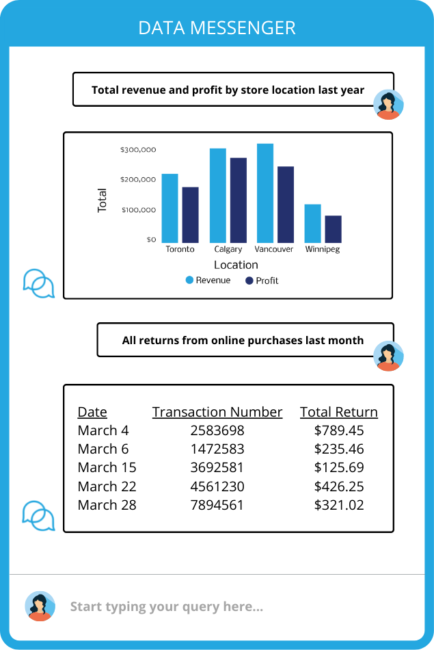~5 minute read

The Opportunity:
A leading Retail Sports-Apparel Company had a specific goal. They wanted to leverage historical and real-time business data to help them make important product and merchandising decisions, faster. They needed a solution that would bridge the gap between the data they needed in-the-moment and the data they were able to access quickly.
The Product Creation (PC) team would analyze quantitative data such as product counts and SKUs, but they required a third-party scraper to obtain this information. It was becoming increasingly difficult for the team to analyze such information or to spot emerging patterns in the data — and these figures were critical to managing quantity, discontinuance, and new product development.
Additionally, the Global Merchandising Team (GMT) was using business unit-specific analysts to gather data about merchant KPIs such as MSRP, Net Sales, YOY amounts, and sales growth vs. discounts. But the company merged their specific analyst team with their General Analytics Team, and as a result, their data reporting turnaround time exploded, impeding their ability to respond and perform efficiently. The GMT realized they needed to get creative due to limited data analyst resources.
Teams had to make decisions based more on intuition than insights.
The GMT built an Excel spreadsheet to access details on product information and retail sales data that were stored in the Company’s internal data warehouse. Even with this new spreadsheet, team members still required more specific information than what had been uploaded and provided in the Excel document, and they needed it in a timely manner. The general analytics team had to manually retrieve the raw files to input data into the spreadsheet, thus a bottleneck formed in the data distribution network. Despite the GMT members’ admirable efforts, the company was struggling with data access, and users still couldn’t gain enough information from the data they were being provided.
The Challenge:
There was no automation between the data source and the Excel document, meaning there was a high risk of missing information and other human errors while manually transferring data — and it also proved very time-consuming.
The PC team found it challenging to handle thousands of products’ worth of information within Excel and needed a solution that would provide a list-based workflow.
The GMT was using a popular Business Intelligence (BI) tool for dashboarding, but its usability for the non-technical business user was limited to specific data only, and certain dashboards weren’t available to all team members.
Finally, the Retail Sports-Apparel Company had access to outsourced analysts, but it could take 4+ weeks to get a specific data report – meaning the GMT and PC teams had to make decisions based more on intuition than insights.
Why Chata:
In short, this Retail Sports Apparel Company needed direct access to the source data in its data warehouse. They chose Chata to resolve their data access bottlenecks and to deliver key insights to more people, more efficiently.
With Chata enabling direct access to data in the data warehouse, the Analysts didn’t have to pull and fetch information for Merchandising, increasing their capacity to work on other projects.
The Chata rollout included a branded web app for the company with a Data Messenger integration. Here, business users could simply ask questions in natural language and receive data responses directly from the source in just seconds. Setup took 30 days working with 10 champions and an 87-95% query success rate was reflected in the initial results.

Plans for future expansion include:
- Enabling additional internal team usage and integrating supply chain distribution information from merchants into the data warehouse for greater insights to be accessible by the Merchandising and Product teams.
- Integrating product data to get query counts on styles and model offerings to help with future planning, design, and purchasing.
- Adding custom Dashboards to provide the company with a user-friendly interface for the team to easily access and analyze vital information for their unique department.
The ROI:
By utilizing Chata, the Merchandising and Product Creation team can access their specific data more quickly than ever and make quantified business decisions based on data, not intuition. Accessing data more quickly and easily means these teams are not missing trends or product opportunities, and they’re able to maximize optimal inventory levels, enabling them to stay ahead of the pack as both leaders and innovators in the retail sector.
The ROI of having approximately 100 individual knowledge workers use Chata for just an hour total each month vs. having this work done manually via analyst teams (at a cost of roughly $70/hr) results in >40% productivity gain; defined as the amount of time saved trying to acquire data for ad-hoc analysis. This monthly productivity gain equates to over 100 hours of manual labor, which can then be spent on other, high-value initiatives. Further, these changes result in an estimated 342% increase in revenue gains and 460% reduction in costs. When considering productivity gains, revenue gains and cost avoidance altogether, a total ROI value of 1042% is achieved through implementing AutoQL.

